When there is a fresh layer of snow on your property, it can be easier to notice if you’ve had any visits from wildlife based on the prints that they leave behind.
How can you identify various wild animal prints in the snow on your New Jersey or Pennsylvania property?
In this article, we will cover some of the wildlife that you are most likely to see in your yard, how to recognize their tracks, and why these prints are signs of a healthy ecosystem.
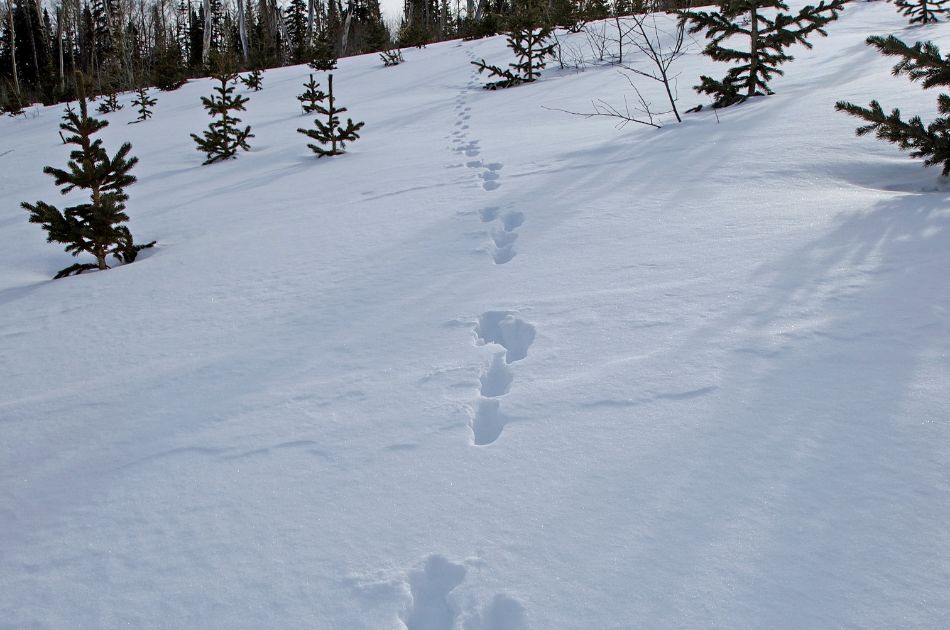
Common Wildlife that Lives in New Jersey and Pennsylvania
New Jersey and Pennsylvania have diverse wildlife populations. Animals you may spot (or see tracks for) include:
- River otter
- Cottontail rabbit
- Gray squirrel
- Elk
- Bobcat
- Striped Skunk
- White-tailed Deer
- Beaver
- Woodchuck
- Eastern coyote
- Raccoon
- Porcupine
- Red fox
- Opossum
- Muskrat
- Gray fox
- Black bear
- Mink
See a brochure of common Pennsylvania Mammals Tracks here >>
View animal track identification (includes paintings of animal tracks) from almanac.com >>
How to Recognize Animal Prints In the Snow
Count the number of toes – The number of toes can be a way to differentiate between different animals.
Look for marks from nails – Canines have nails, while felines don’t leave nail marks because they can retract their nails.
Check the Stride
Animals have four different types of strides: zig-zag, waddle, bounding, and hopping.
These strides can be noted in the animal’s prints.
Zig-zaggers, also known as perfect walkers, walk carefully and purposefully. The rear foot will land in the spot where the front foot fell, creating a zig-zag pattern. Examples of zig-zaggers include deer, coyotes, and bobcats.
Waddlers move one side of their body and then the other. Their track is made up of four prints, unlike zig-zaggers. Examples of waddlers include bears, skunks, raccoons, beavers, and porcupines.
Bounders leap from their front feet and land on their back, with the back feet landing where the front feet previously left prints. These prints appear as two feet side-by-side. Examples of bounders include otters and weasels.
Finally, hoppers place their back feet slightly in front of their front feet before leaping forward. Examples of hoppers include rabbits, mice, squirrels, and chipmunks.
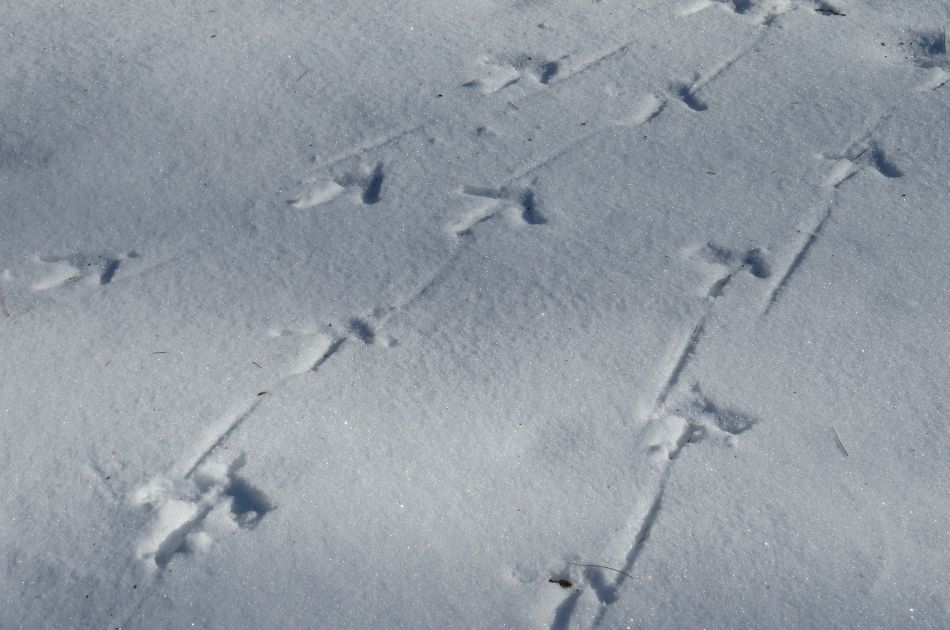
Learn Some of the Basic Print Types
Once you can tell the differences between various types of tracks, you are closer to recognizing which animal left the prints. Here are some categories of tracks to familiarize yourself with:
- Hoof tracks
- Canine tracks
- Feline tracks
- Bird tracks
- Other small mammal tracks
- Reptile and amphibian tracks
- Rodent tracks
- Bear tracks
Remember that Some Animals Hibernate
You are less likely to spot tracks of animals that hibernate, such as bears, during the middle of the winter. However, bear tracks can be spotted in the snow in early spring once they emerge from hibernation.
Knowing this fact can help you eliminate some animals as a possibility when you spot tracks in the snow this winter.
Take Photos or Use an App
Few people can recognize animal prints as soon as they see them. Take some photos with your phone and review them against images you can find online.
Here’s a great visual guide to many North American animal tracks >>
If you’d rather discover what the animal prints are more quickly, you can download an app on your phone that can help you determine which animal left the tracks.
Some apps to consider:
Just for fun, you (or your kids) could make a cast of any animal tracks. Learn how in the video linked below.
How to Make Your Own Animal Track Cast >>
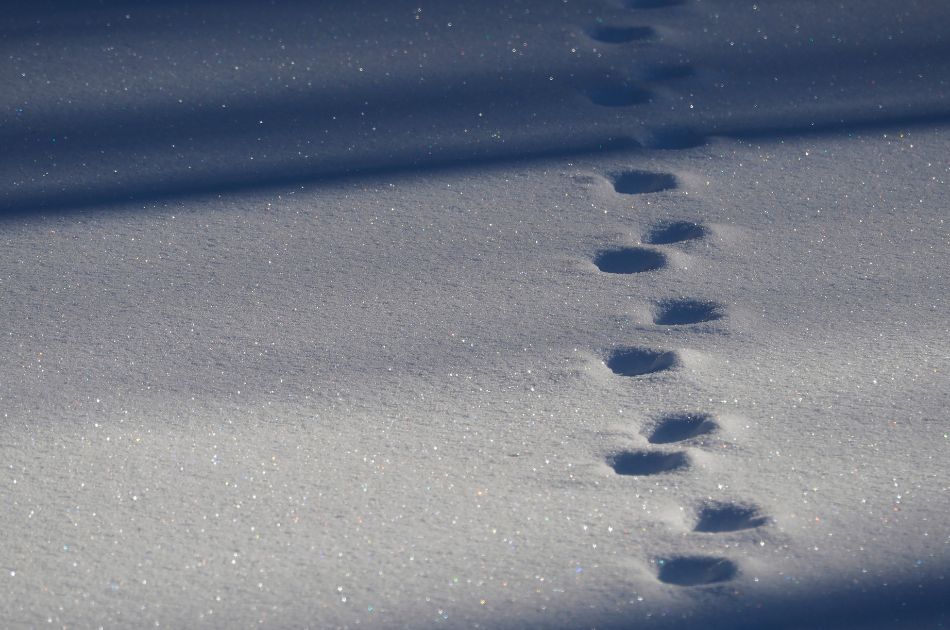
Why Finding Wildlife Prints is a Good Sign
Finding wildlife prints is a clear indication that animals use (or at least visit) your property. While you may think this is a negative thing, it can actually be a sign that your yard is a part of a healthy ecosystem.
Construction and development have removed many natural wildlife habitats and have led to a decline in the number of common animal species in New Jersey and Pennsylvania.
However, creating a healthy ecosystem on your property includes working with (rather than against) the native insect and wildlife populations.
Beneficial insects, for example, are a natural form of pest control.
Learn more about beneficial insects
Learn more about parasitic wasps, a natural pest control
Learn more about the praying mantis, a beneficial insect
Learn more about the hoverfly, a beneficial insect
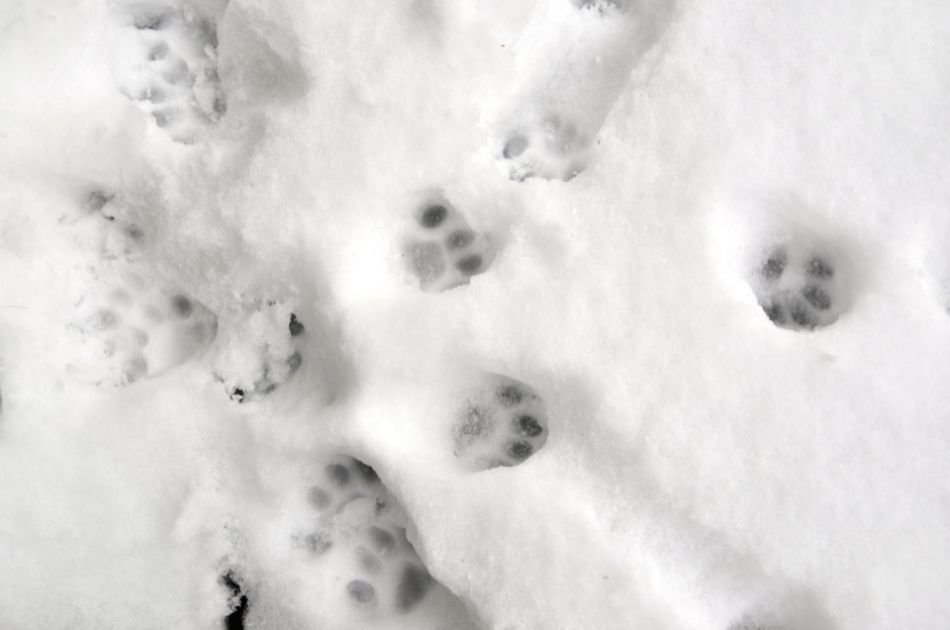
How Your Yard Can Benefit Local Wildlife
Though a yard is never a substitute for a completely wild area, homeowners in New Jersey and Pennsylvania can make small steps to provide shelter, food sources, or habitats for our local wildlife.
Some of the ways you can help wildlife include:
- Leaving or creating brush piles for ground nesting birds or small mammals.
- Installing or maintaining ponds or wetlands as a water source for many animals, habitats for tadpoles, or food sources for animals that rely on aquatic vegetation.
- Planting wildflowers or native grasses as food and cover for wildlife. Native wildflowers also help out pollinators such as bees, butterflies, and moths. Small birds are also known to utilize grasslands.
- Planting trees or forested areas as habitats for bird species and other wildlife.
- Choosing native plants over non-native or invasive varieties.
Wondering about how you can make your yard safe for your own pets? Learn 8 ways to create a pet-friendly yard in our previous blog post.
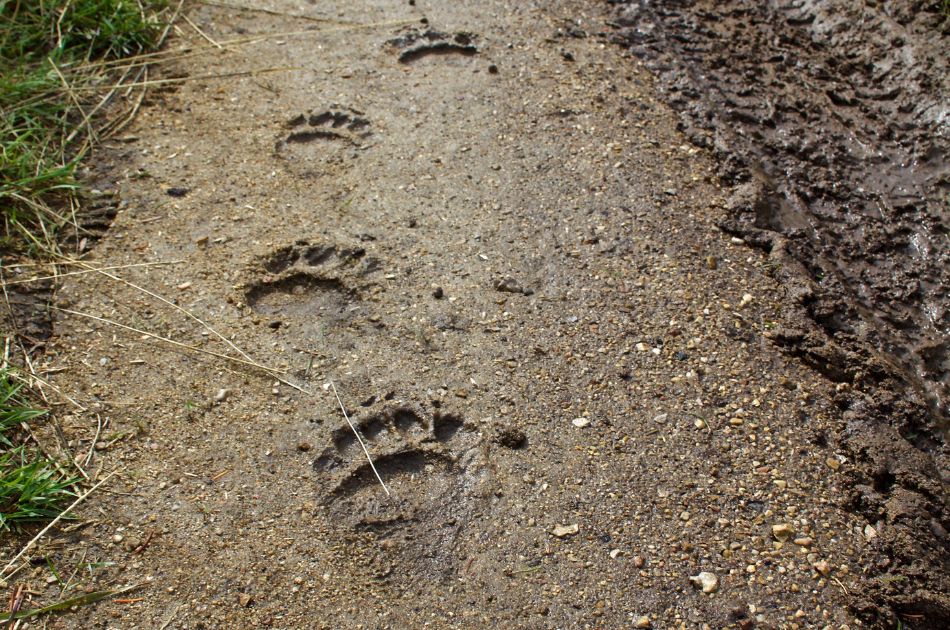
Working With Organic Plant Care Benefits Local Wildlife
At Organic Plant Care, we prioritize organic treatments for your lawns, shrubs, and trees. We emphasize working with the environment rather than against it.
If you are looking for a way to make your New Jersey or Pennsylvania property more habitable for our local wildlife and want to transform your yard into a healthy ecosystem, contact us to learn the ways we can help.
Protect the safety, value, and beauty of your lawn, ornamental trees, shrubs, and landscape with organic fertilization, expert pruning, and effective pest and disease management.
GET THE LATEST NEWS
Subscribe to the Organic Plant Care Newsletter and get timely and helpful tips and updates monthly.
There's no spam - we promise!





